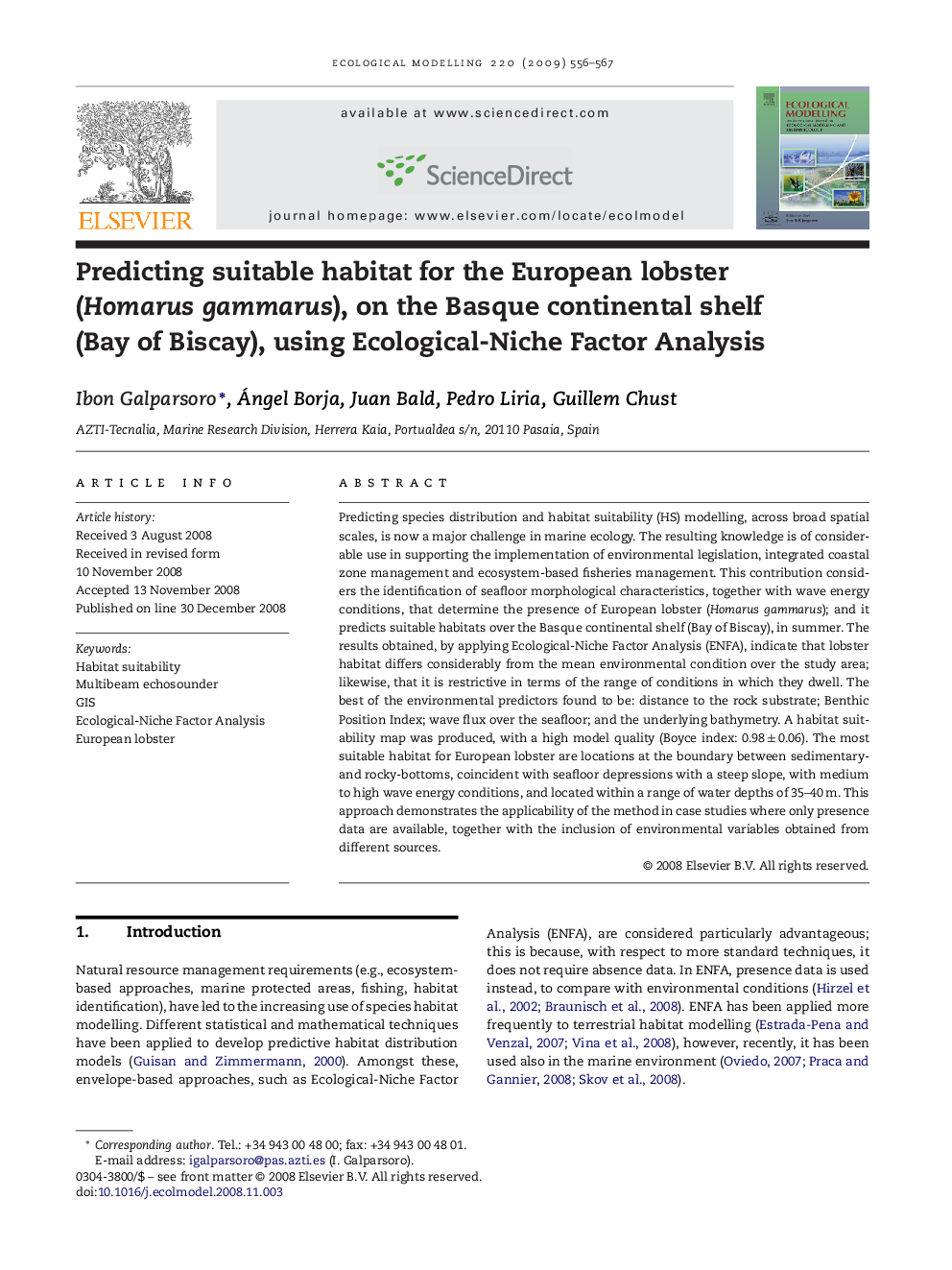| Article ID | Journal | Published Year | Pages | File Type |
|---|---|---|---|---|
| 4377705 | Ecological Modelling | 2009 | 12 Pages |
Predicting species distribution and habitat suitability (HS) modelling, across broad spatial scales, is now a major challenge in marine ecology. The resulting knowledge is of considerable use in supporting the implementation of environmental legislation, integrated coastal zone management and ecosystem-based fisheries management. This contribution considers the identification of seafloor morphological characteristics, together with wave energy conditions, that determine the presence of European lobster (Homarus gammarus); and it predicts suitable habitats over the Basque continental shelf (Bay of Biscay), in summer. The results obtained, by applying Ecological-Niche Factor Analysis (ENFA), indicate that lobster habitat differs considerably from the mean environmental condition over the study area; likewise, that it is restrictive in terms of the range of conditions in which they dwell. The best of the environmental predictors found to be: distance to the rock substrate; Benthic Position Index; wave flux over the seafloor; and the underlying bathymetry. A habitat suitability map was produced, with a high model quality (Boyce index: 0.98 ± 0.06). The most suitable habitat for European lobster are locations at the boundary between sedimentary- and rocky-bottoms, coincident with seafloor depressions with a steep slope, with medium to high wave energy conditions, and located within a range of water depths of 35–40 m. This approach demonstrates the applicability of the method in case studies where only presence data are available, together with the inclusion of environmental variables obtained from different sources.
